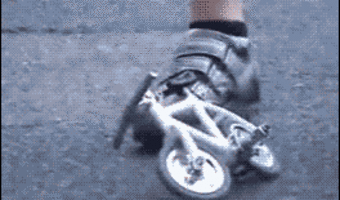20 Popular Myths Debunked: “Facts” You’ve Always Believed That Simply Aren’t True!
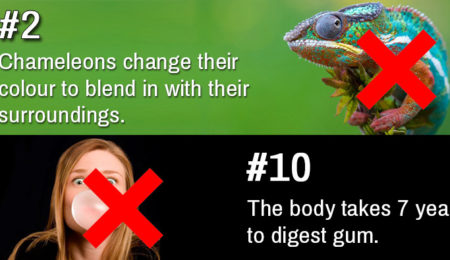
Whether an old wives’ tale or something that was popularized by media, every generation sees its share of popular myths and misconceptions that simply will not die out. The Internet has not made things any easier in this regard, as it is easier now more than ever to be baited by stories that seem true, but miss the mark on scientific accuracy. We bring you a list of 20 such urban myths that have been debunked time and again, yet somehow stick stubbornly to people’s minds.
#1
Myth: Lightning never strikes the same place twice.
Fact: Lightning can strike the same place twice and even more times.
A location has no part to play in changing the electrical activity in the storm itself, so once it recharges it may strike a place more than once. Given enough time (whether 10 minutes or a million years), the theory states that it is “inevitable” that a single spot will be hit repeatedly. On June 14 of 2005, The WVAH TV tower in St. Albans, West Virginia was hit by lightning 50 times.
To cite another example, Chicago’s three tallest skyscrapers were struck by lightning 17 times on the 30th of June, 2014. The Sears Tower took 10 hits while the Trump Tower and the John Hancock Center were hit 8 and 4 times respectively.(source)
#2
Myth: Chameleons change their colour to blend in with their surroundings.
Fact: Chameleons do not change their colour to blend in with the surroundings. They do it to control their body temperature and communicate with others of their kind.

Chameleons are already pros at camouflaging themselves; evolution took care of that. This colour-changing phenomenon is actually triggered by physical, physiological and emotional changes in the animal, including the stimuli that it receives from the environment (like light and temperature). By changing its colour a chameleon can also signal its state of mind to other chameleons, serving as a way of visual inter-personal communication.(source)
#3
Myth: People in the Dark Ages believed that the earth was flat.
Fact: Medieval Europeans did not believe that the earth was flat. It was common knowledge that the earth was spherical even during the time of the ancient Greeks.
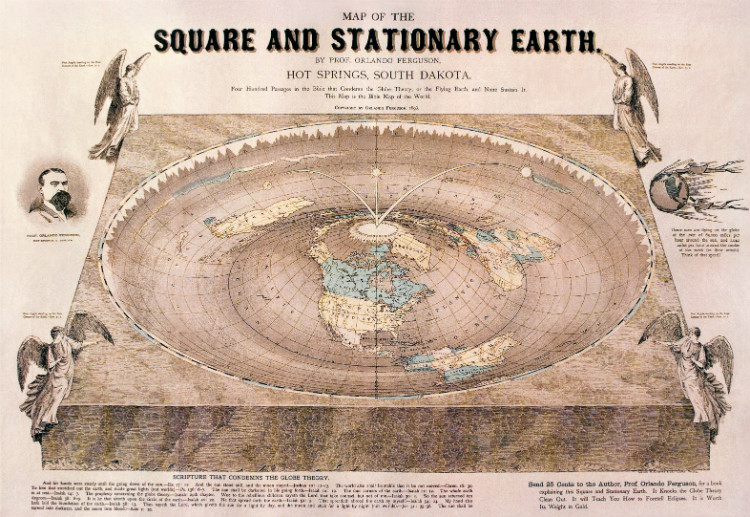
The story surfaced in the 1800s (when explorers began to push boundaries) and gained popularity steadily, but is entirely untrue. Contrary to what the myth will have you believe, Columbus did not fear his ships would fall off the edge of the earth. There were much more serious logistics to consider, given the dangers of marine travel back then. For example, a more realistic concern was that they could run out of supplies (consequently the entire crew could perish) if their destination was much farther than they had calculated.(source)
#4
Myth: The tongue has different regions to detect tastes.
Fact:Â The entire tongue senses all the five tastes – sweet, sour, salty and bitter – equally.
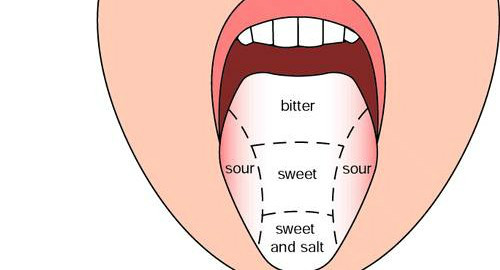
Research reveals that the tongue contains 50-100 receptors for each taste, distributed more or less in a random manner, which completely negates the logic of this myth.(source)
#5
Myth: The Great Wall of China is visible to the human eye from the moon.
Fact: The Great Wall of China is practically impossible to see with the naked eye from space.

Unless your vision is three times sharper than a falcon’s. Scientists explain that looking at the Wall even from a distance of 100 miles (160 kilometers) would be like looking at a 2-centimeter wide cable from half a kilometer (> a third of a mile) away. The origin of this myth goes as far back as 1932 to an episode of Ripley’s Believe It or Not!, and was intended more as show-bait than actual science.(source)
#6
 Myth: Cracking your knuckles gives you arthritis.
Fact: Cracking your knuckles does not give you arthritis.

Technically, you aren’t even “cracking” your knuckles; you’re actually “bursting” the air bubbles trapped between the joints. Research has shown time and again that there is no correlation between cracking your knuckles and developing arthritis. Dr Donald L. Unger, an allergist, tested this theory by cracking his knuckles at least twice a day for 60 years and published his findings in a 1998 paper. The verdict? Not the slightest sign of arthritis.(1,2)
#7
Myth: People are either left-brain or right-brain dominant.
Fact: People do not have a “dominant” brain hemisphere.
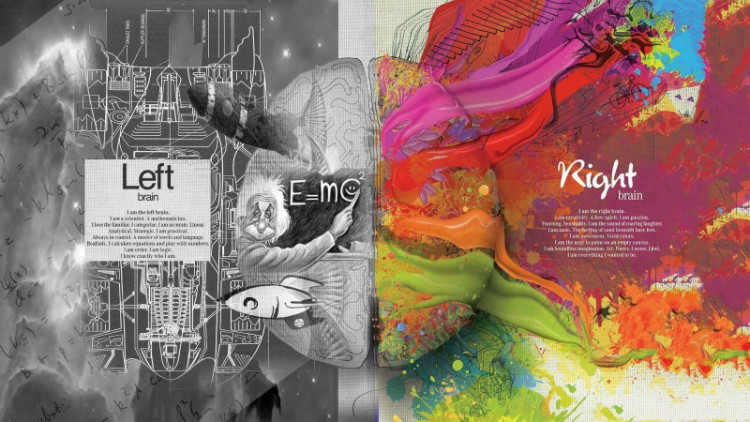
The two sides of the brain always work together. The idea that the left side is “logical” and the right side is “creative” is severely flawed, primarily because the functions of the brain were mischaracterized in the original experiments. Latest research shows that people do not have a “dominant” hemisphere, and engage areas on both sides of their brains while thinking and performing tasks of any nature.(source)
#8
Myth: Glass is a slow-moving liquid.
Fact: Glass is actually an amorphous solid.

The ripple patterns seen inside some glass items are largely attributed to the way they are manufactured, not because glass itself is a liquid that moves slowly over time.(source)
#9
Myth: Reading in the dark or in low light damages your eyes.
Fact: Reading in the dark is not actually bad for your eyesight.

Studies show that reading in the dark does not inevitably cause long-term damage to the eyes, although it may end up straining them. What was conclusive, however, is that exposure to daylight and engaging in outdoor activities has a significantly more positive effect on the eyes. In other words, it’s not bad per se, but there are better ways to treat your eyes.(source)
#10
Myth: The body takes 7 years to digest gum.
Fact: It does not take 7 years (or even 7 days) to digest gum.

Neither does it stick to your insides, as yet another one states. Like everything else, the digestive system breaks the gum down, uses what it can and discards the rest – all within a day or two. However, there are situations where chewing gum can be potentially hazardous, such as in cases where one suffers from digestive disorders.(source)
#11
Myth:Â NASA spent millions of dollars to fund a “space pen” while the Soviets simply used a pencil.
Fact: The Russians did not just use pencils in space.

Ballpoint pens and regular graphite pencils don’t work in zero gravity, as the ink would float around in the pen cartridge (never making contact with the tip) and bits of pencil graphite inside a spacecraft could pose serious technical hazards. While it is true that the Soviets used a greased pencil (like crayons), writing with it proved to be a pain the neck. After Paul C. Fischer developed the Fischer Space Pen in 1965, both America and Russia stocked up on them so the Apollo 1 tragedy (where the entire spacecraft went up in flames due to a fire triggered by graphite particles) would never be repeated.(source)
#12
Myth: Always wait for an hour to swim after you eat.
Fact: Studies show that this is not a hard and fast rule, and in reality accomplishes nothing.Â
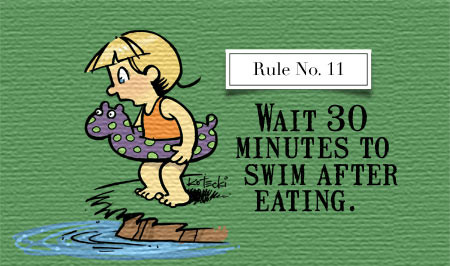
This one has endured the ages. The explanation is that there wouldn’t be enough blood to keep your arms and legs functioning underwater, as it would be sent to the digestive tract to aid in digestion. Science says otherwise. There is still enough blood being supplied to the rest of the body while digestion takes place. According to doctors, at most one would experience a minor cramp if they hit the pool immediately after eating; nothing else.(source)
#13
Myth: The colour red makes bulls angry.
Fact: Bulls are not enraged by the colour red. They are actually colour-blind.

Bulls are angered by the threat posed by the matadors, and not the colour itself. As experiments demonstrate, bulls seem to charge at anything that moves fast and erratically, regardless of what colour it is. This myth was perpetuated when Spanish matadors in the 1700s began using red capes in bullfighting.(sources)
#14
Myth: Bats are blind.
Fact: Contrary to popular belief, bats are not blind at all. In fact, they use their eyes and excellent sonar senses to obtain 20/20 vision.

Bats do have eyes and they can see just fine. Objects become blurry while flying at high velocities, so bats use their sonar senses in addition to their eyes to rectify this and improve the clarity of vision. By integrating their rather decent night-vision and supreme echolocation ability, bats are able to efficiently and accurately gauge their surroundings and hunt prey. Scientists call this a kind of “supervision”, which is anything but blind.(1,2)
#15Â
Myth: Never wake a sleepwalker.Â
Fact: Waking a sleepwalker is not dangerous at all.Â

It is more likely that the person may end up hurting themselves if they stray too far while sleepwalking. Although there is no danger in waking a person who is sleepwalking, it may not be an entirely pleasant experience for them either. Snapping out of deep-REM sleep state may cause undue distress to a person since we are accustomed to waking up from a lighter level of sleep every day.(source)
#16
Myth: Human beings have 5 senses.
Fact: Human beings have up to 21 different senses.

Although there is some dispute over the exact number, the fact that there are more than the five basic senses brooks no argument. Nociception (sense of pain), Chronoception (sense of the passage of time) and Proprioception (sense of where your arms and legs are in relation to the rest of your body) are some among the lesser-known senses. Although they are termed as secondary and tertiary senses, they are just as important as the basic senses. If you were blind, for example, Proprioception would help you eat properly because it lets you gauge where your mouth is in relation to your hands.(source)
#17
Myth: Drinking eight glasses of water a day is good for the body.
Fact: Drinking eight glasses of water a day is not required to maintain good health.

On the contrary, doctors warn that one could risk diluting the body’s sodium levels due to over-hydration if this is taken to the extreme. As the old maxim goes, too much a good thing can be bad too. As current research stands, drinking only when thirsty is just fine. In recent years, it was also revealed that the study that first published these results was funded by a major mineral water manufacturing company which provided the authors with medical writing assistance and a considerable payment. Science, you say? More like sneaky marketing.(source)
#18
Myth: We only use 10% of our brains.
Fact: Although we are only aware of 10% of how the brain functions, we use the entire brain in everyday life.
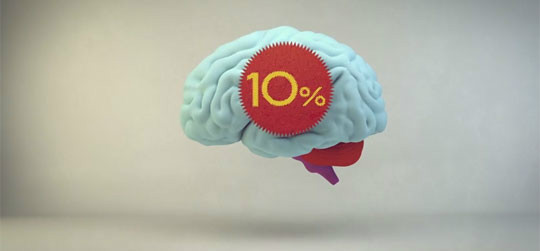
The brain is a complex thing, and it comes as no surprise that it is subjected to all kinds of myths regarding its nature. We may only be aware of 10% of how the brain functions, owing to the fact that 90% of brain cells are not neuron-like, but studies conclusively show that we exercise most of the brain in everyday life. Clusters of neurons that correspond to certain functions do exist, but they do not work in isolation. Essentially, all areas of the brain are engaged and used depending on the nature of the task.(source)
#19
Myth: The forbidden fruit was an apple.
Fact: Nowhere in the Book of Genesis is it mentioned that the forbidden fruit was an apple.

The idea of an apple being the forbidden fruit took root in Christian literature after the publication of Milton’s Areopagitica. Several artistic depictions of the Book of Genesis in Western Europe pointed to the same, embedding this detail more firmly in the consciousness of the masses. Throughout the ages, alternate explanations have been given for why the apple is the strongest contender, but there is no corroborating evidence from the Bible itself. Other proposed fruits were grape, fig, pomegranate, and wheat.(source)
#20
Myth: Fortune cookies originated in China.Â
Fact: Fortune cookies were not invented by the Chinese; they were exported to Hong Kong from Japan.

The first fortune cookie was made in Kyoto, Japan; as early as the 19th-century. When these delicious confectionaries gained a little popularity, several Chinese restaurant owners began to lay claim over the fortune cookie and it ultimately came to be associated with Chinese cuisine due to the controversy.(source)



















